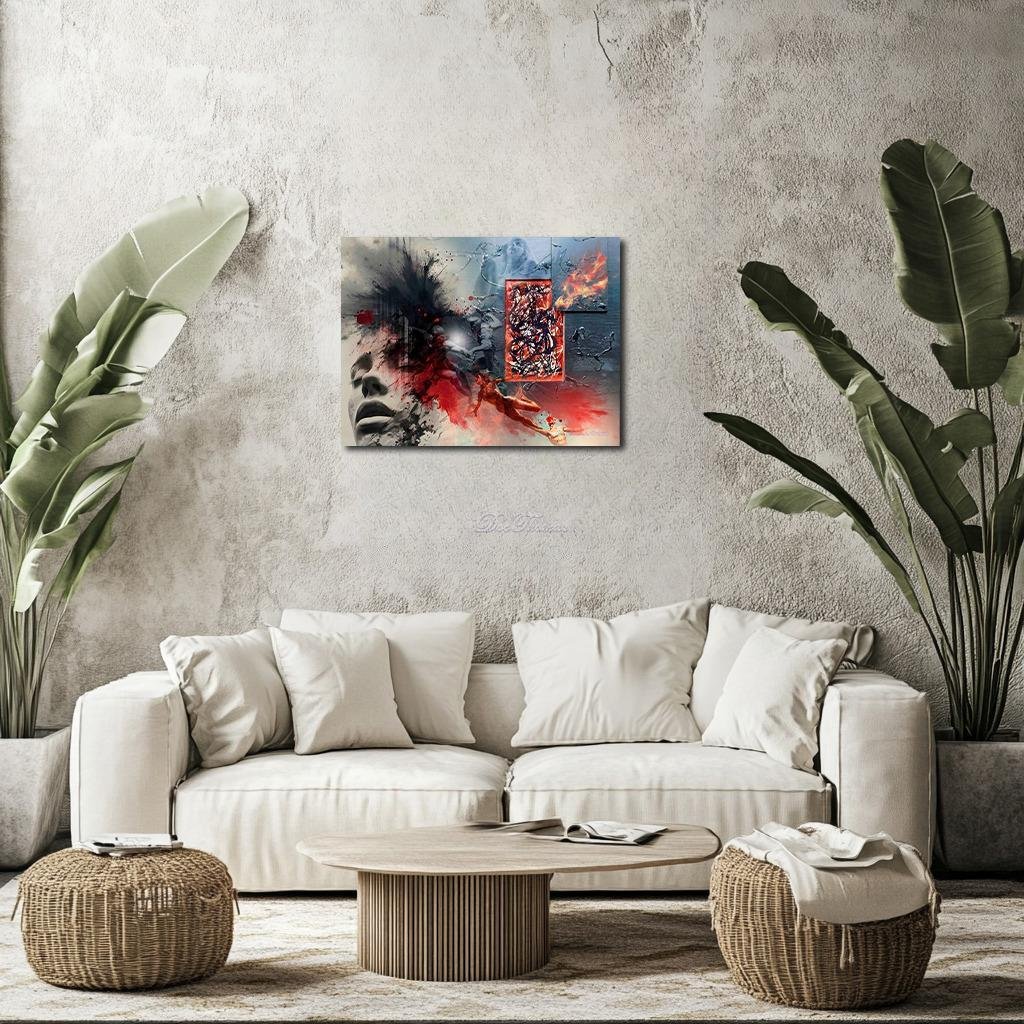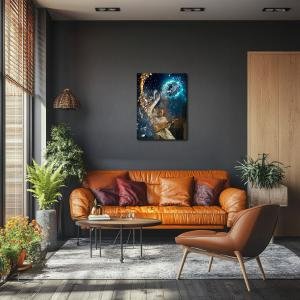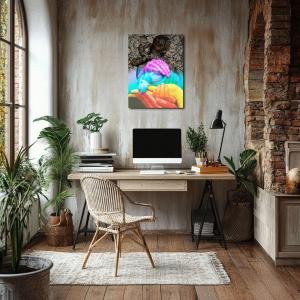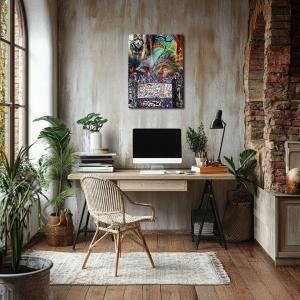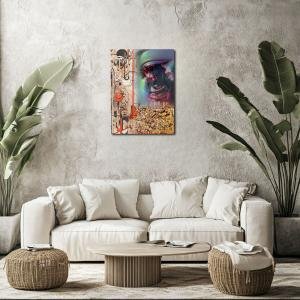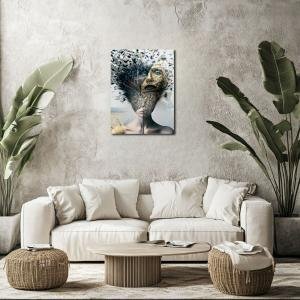Veins of Porcelain: Descent Into the Red Silence
Veins of Porcelain: Descent Into the Red Silence transforms Jackson Pollock’s Free Form into a storm of psychological rupture. Bodies fall and burn across a fractured void, while Pollock’s original canvas blazes at the center like a sacred wound. Swirls of red, smoke, and scorched blue create a visual battlefield of descent and resurrection. Each brushstroke becomes a scream; each figure a fragment of memory in collapse. This reimagining frames abstraction not as freedom, but as fire—tracing the thin line between expressive chaos and inner obliteration.
Please see Below for Details…
Hotline Order:
Mon - Fri: 07AM - 06PM
404-872-4663
Veins of Porcelain: Descent Into the Red Silence reimagines Jackson Pollock’s Free Form as an eruption of unfiltered trauma, loss, and resurrection—where abstraction collides with flesh, and consciousness bleeds into the abyss. Pollock’s original canvas, once teetering on the edge of controlled chaos, now acts as a pulsating epicenter—a box of visual sirens, set ablaze and embedded like a bleeding relic within a tortured cosmos. In this surreal expansion, the idea of “form” is turned inside out, becoming not just visual abstraction, but emotional combustion.
The human body is no longer an object—it is a trajectory. Figures fall, soar, reach, scream, and implode through layers of graphite air and blood-smoke. One is drawn in full descent, his skin scorched in crimson as though ripped from a fresco in mid-judgment. Another is suspended—half agony, half deliverance—his gesture echoing that of resurrection, of reaching from drowning. These figures are not literal—they are symbolic fragments of the self, torn from the core of consciousness and thrown across a psychological battlefield where expression, memory, and fire rage unbound.
Pollock’s original abstraction appears like a crucifix of motion. It is bordered in electric vermilion, vibrating against the muted metallic steel behind it. The lines within it have not changed, but their role has. Once spontaneous gestures of artistic freedom, they now behave like coded screams—hardened, scorched, preserved like fossilized anguish. These are no longer drips of paint, but veins of flame mapping the interior of pain. The canvas within the canvas becomes a shrine—an altar of chaos that the rest of the image spins around like a death star.
Color here is trauma’s dialect. Red dominates—not with romance, but with rupture. Blood red spills like memory across the forehead of a falling man, pools into the eye sockets of a shattered figure, and clots in the gesture of a hand reaching backward through time. The red is not accidental—it is the color of fragmentation, violence, passion, and the echo of breath lost. Greys and blacks surge like carbon ghosts across the background, a smog of despair that clings to each contour. Pale blue light emerges not as peace but paralysis, a moment of stillness on the edge of total collapse. Flames erupt in a surreal panel to the right—frozen fire that licks the border of Pollock’s original piece. The orange embers there illuminate nothing; they consume perception itself. The visual dialogue between those flames and the bodies falling around them creates a symphony of internal collapse.
As the artist, my thought while reimagining Free Form was to ask: what does abstraction look like when it doesn’t symbolize freedom, but fragmentation? What if Pollock’s strokes are not symbols of energy, but remnants of violence—emotional, cultural, personal? I didn’t want to interpret Free Form in structure. I wanted to feel it as collapse. I placed the original painting like an exposed nerve in the center of a fractured consciousness. Around it, I built the aftermath: the moment when identity no longer knows what it’s surviving from, only that it is falling.
The human face in the lower left, etched in grayscale, is both scream and whisper. Her lips are parted—not in speech, but in surrender. The figures flung across the image are not posed; they are flayed open—caught in mid-motion, perhaps mid-mourning. The dripping textures beneath them mirror the gestural chaos of Pollock’s original hand. I did not mimic his marks—I consumed them, letting them spill from the bodies, from the ruptures in skin and shadow. The painting’s center holds its silence, but the peripheries explode.
The tension between flesh and abstraction in this piece is deliberate. Flesh suffers. Paint remembers. Abstraction here is no longer detached—it is complicit. It records the very moment when understanding breaks, when language is no longer sufficient, and image must scream in its place. Pollock’s Free Form once promised visual liberty. My reinterpretation turns that promise into question. Is chaos liberation—or just the clearest reflection of the soul’s shattering?
Add your review
Your email address will not be published. Required fields are marked *
Please login to write review!
Looks like there are no reviews yet.

